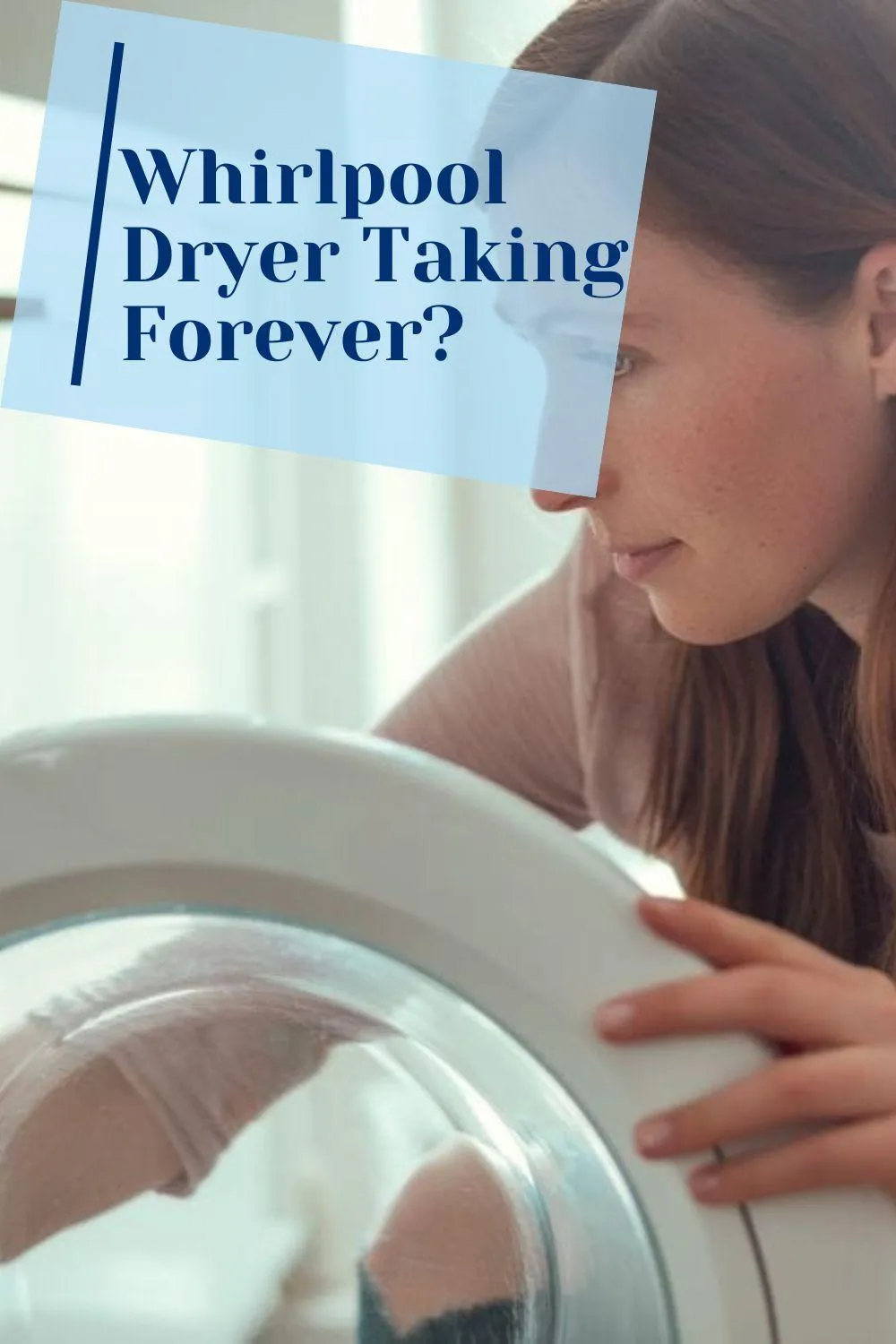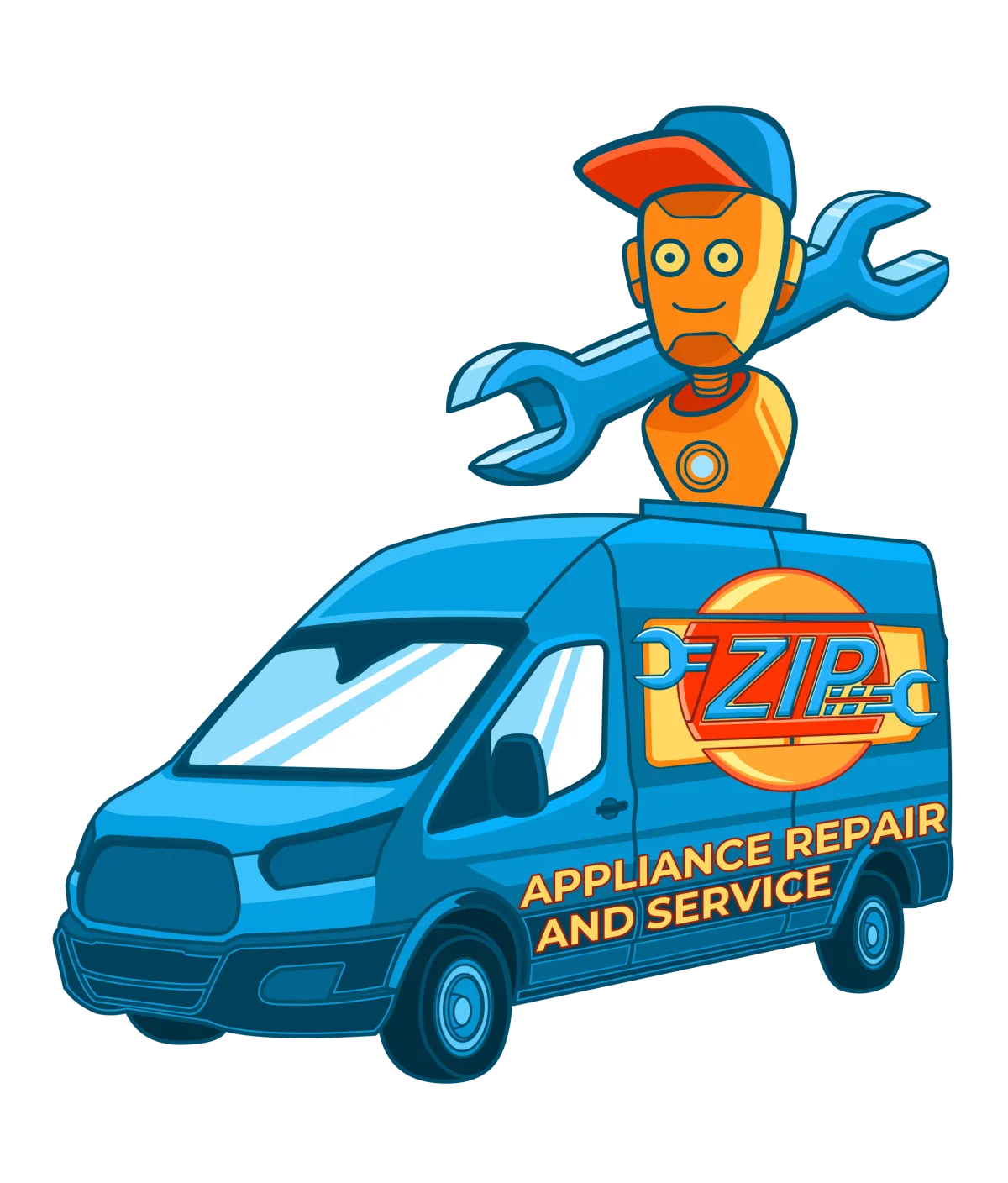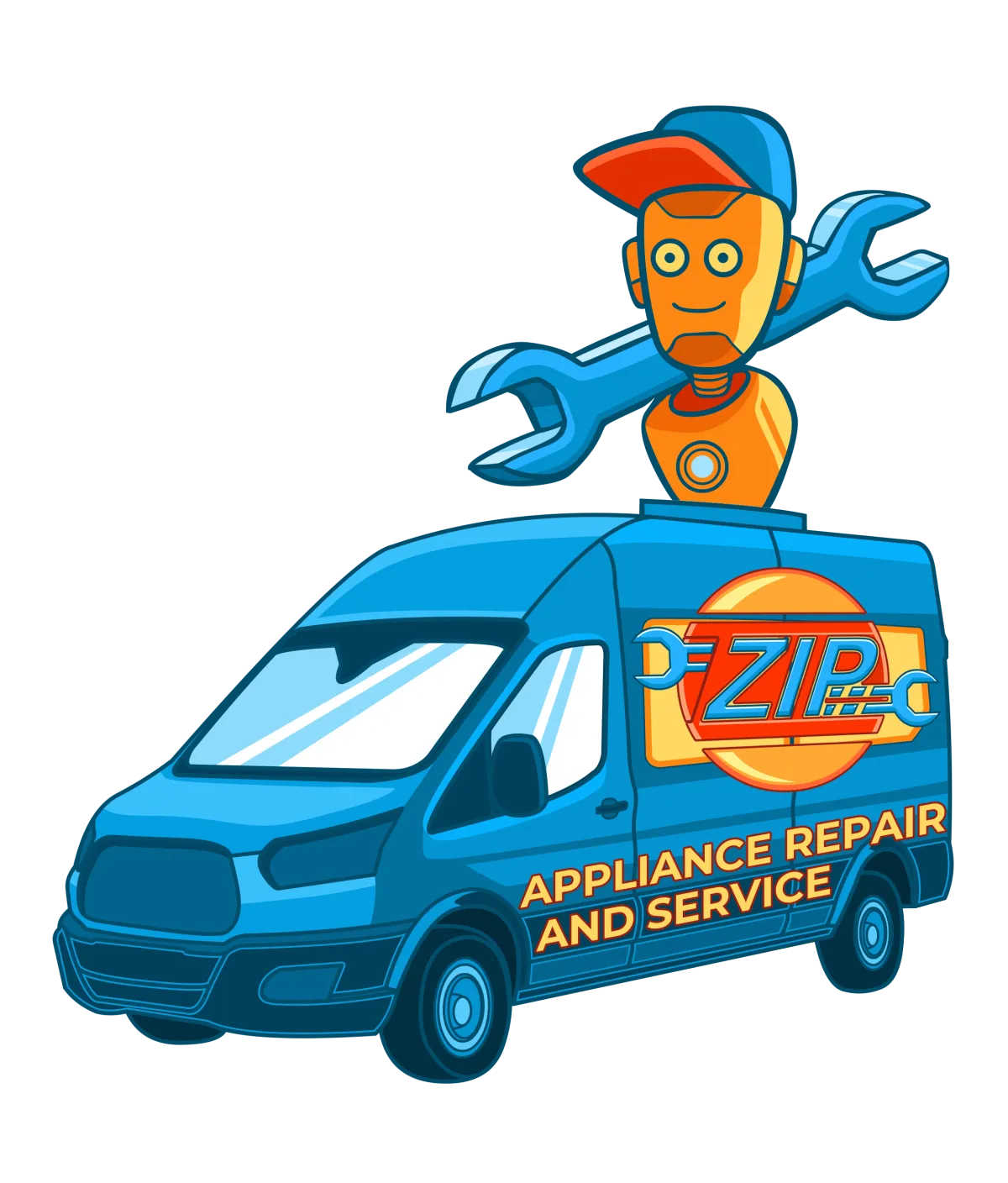THE FASTEST TOOLS IN TOWN
ZIP APPLIANCE REPAIR & SERVICE
Phone: (559) 272-4265
Phone: (559) 272-4265
Appliance Repair Tips For Fresno, CA Residents

Why Is My Whirlpool Dryer So Slow?
Whirlpool dryer taking forever? ⏰ Don’t worry! We’ve got the solutions. Learn why your dryer might be slow and how to fix it. - Appliance Boss
INTRODUCTION:
Dryers are essential appliances in modern households, providing convenience and efficiency. However, when a dryer starts to take an inordinate amount of time to dry clothes, it can become frustrating and time-consuming. Understanding the common causes of slow drying can help you identify and address the issue, ensuring optimal performance.
Understanding Dryer Drying Times
The ideal drying time for a Whirlpool dryer can vary depending on factors such as the load size, fabric type, and moisture content. However, if your dryer consistently takes significantly longer than usual to dry clothes, it's a sign that something might be amiss.

Factors Affecting Dryer Efficiency
Several factors can influence a dryer's efficiency and drying times:
Clogged dryer vent: A clogged vent can restrict airflow, hindering the dryer's ability to remove moisture from clothes.
Overloading the dryer: Packing too many clothes into the dryer can prevent proper airflow and extend drying times.
Faulty heating element: A damaged or malfunctioning heating element can reduce the dryer's heat output, leading to longer drying cycles.
Blocked lint trap: A clogged lint trap can restrict airflow and reduce the dryer's efficiency.
Inefficient airflow: Issues with the dryer's blower wheel or belt can impair airflow and affect drying times.
Common Causes of Slow Drying
Clogged Dryer Vent
A clogged dryer vent is a common culprit behind slow drying times. Over time, lint, dust, and other debris can accumulate in the vent, restricting airflow and hindering the dryer's ability to remove moisture. Signs of a clogged vent include:
Excessive heat: The dryer feels hotter than usual to the touch.
Long drying times: Clothes take significantly longer to dry than normal.
Musty odors: A musty smell may emanate from the dryer or the laundry room.
Overloading the Dryer
Overloading the dryer can also contribute to slow drying times. When the dryer is packed too full, clothes cannot tumble freely, preventing proper airflow and hindering the drying process. It's essential to follow the manufacturer's recommended load capacity to ensure optimal performance.
Faulty Heating Element
A faulty heating element can significantly impact drying times. If the heating element is damaged or not functioning properly, it may not provide sufficient heat to dry clothes effectively.
Blocked Lint Trap
The lint trap is a crucial component of a dryer, designed to capture lint and prevent it from clogging the dryer's exhaust system. A blocked lint trap can restrict airflow and reduce drying efficiency. It's essential to clean the lint trap after each use.
Inefficient Airflow
Issues with the blower wheel or belt can impair airflow within the dryer, leading to slower drying times. These components can become worn out over time or may be damaged due to other factors.
Troubleshooting Slow Drying
If your dryer is taking too long to dry clothes, here are some troubleshooting steps you can take:
Inspecting the Dryer Vent
Using a vent cleaning kit: A vent cleaning kit can be used to remove lint and debris from the dryer vent.
Hiring a professional for cleaning: For stubborn clogs or complex vent systems, it's recommended to hire a professional for cleaning.
Checking for Overloading
Reducing the load size: If you're overloading the dryer, reduce the amount of laundry you're putting in.
Ensuring proper distribution of clothes: Ensure that the clothes are evenly distributed within the dryer to prevent clumping and allow for proper airflow.
Testing the Heating Element
Using a multimeter: Use a multimeter to test the continuity of the heating element. If it's damaged, it will need to be replaced.
Replacing if necessary: If the heating element is faulty, it will need to be replaced by a qualified technician.
Cleaning the Lint Trap
Thorough cleaning: Remove the lint trap and thoroughly clean it to remove any lint or debris.
Inspecting for damage: Check the lint trap for any signs of damage, such as cracks or tears.
Checking Airflow
Examining the blower wheel and belt: Inspect the blower wheel and belt for signs of wear or damage.
Ensuring proper airflow: If the blower wheel or belt is damaged, it may need to be replaced.
Improving Dryer Efficiency
In addition to addressing the underlying causes of slow drying, there are several steps you can take to improve your dryer's efficiency:
Using Dryer Balls
Dryer balls can help reduce drying times and prevent wrinkles. They can also help fluff up clothes and make them softer.
Adjusting Dryer Settings
Choosing the appropriate drying cycle: Select the drying cycle that best suits the type of fabric and the desired level of dryness.
Using the correct heat setting: Use the appropriate heat setting based on the fabric type. For example, delicate fabrics may require a lower heat setting.
Regular Maintenance
Cleaning the lint trap frequently: Clean the lint trap after each use to prevent clogs and improve airflow.
Inspecting and cleaning the dryer vent: Regularly inspect and clean the dryer vent to ensure proper airflow.
Checking for worn-out parts: Periodically check for worn-out parts, such as the blower wheel or belt, and replace them as needed.
Whirlpool dryer taking forever? ⏰ Don't waste time! Learn why & how to fix it. Need a hand? Zip Appliance Repair is here to help! (559) 272-4265 #dryertroubleshooting

Why Is My Whirlpool Dryer So Slow?
Whirlpool dryer taking forever? ⏰ Don’t worry! We’ve got the solutions. Learn why your dryer might be slow and how to fix it. - Appliance Boss
INTRODUCTION:
Dryers are essential appliances in modern households, providing convenience and efficiency. However, when a dryer starts to take an inordinate amount of time to dry clothes, it can become frustrating and time-consuming. Understanding the common causes of slow drying can help you identify and address the issue, ensuring optimal performance.
Understanding Dryer Drying Times
The ideal drying time for a Whirlpool dryer can vary depending on factors such as the load size, fabric type, and moisture content. However, if your dryer consistently takes significantly longer than usual to dry clothes, it's a sign that something might be amiss.

Factors Affecting Dryer Efficiency
Several factors can influence a dryer's efficiency and drying times:
Clogged dryer vent: A clogged vent can restrict airflow, hindering the dryer's ability to remove moisture from clothes.
Overloading the dryer: Packing too many clothes into the dryer can prevent proper airflow and extend drying times.
Faulty heating element: A damaged or malfunctioning heating element can reduce the dryer's heat output, leading to longer drying cycles.
Blocked lint trap: A clogged lint trap can restrict airflow and reduce the dryer's efficiency.
Inefficient airflow: Issues with the dryer's blower wheel or belt can impair airflow and affect drying times.
Common Causes of Slow Drying
Clogged Dryer Vent
A clogged dryer vent is a common culprit behind slow drying times. Over time, lint, dust, and other debris can accumulate in the vent, restricting airflow and hindering the dryer's ability to remove moisture. Signs of a clogged vent include:
Excessive heat: The dryer feels hotter than usual to the touch.
Long drying times: Clothes take significantly longer to dry than normal.
Musty odors: A musty smell may emanate from the dryer or the laundry room.
Overloading the Dryer
Overloading the dryer can also contribute to slow drying times. When the dryer is packed too full, clothes cannot tumble freely, preventing proper airflow and hindering the drying process. It's essential to follow the manufacturer's recommended load capacity to ensure optimal performance.
Faulty Heating Element
A faulty heating element can significantly impact drying times. If the heating element is damaged or not functioning properly, it may not provide sufficient heat to dry clothes effectively.
Blocked Lint Trap
The lint trap is a crucial component of a dryer, designed to capture lint and prevent it from clogging the dryer's exhaust system. A blocked lint trap can restrict airflow and reduce drying efficiency. It's essential to clean the lint trap after each use.
Inefficient Airflow
Issues with the blower wheel or belt can impair airflow within the dryer, leading to slower drying times. These components can become worn out over time or may be damaged due to other factors.
Troubleshooting Slow Drying
If your dryer is taking too long to dry clothes, here are some troubleshooting steps you can take:
Inspecting the Dryer Vent
Using a vent cleaning kit: A vent cleaning kit can be used to remove lint and debris from the dryer vent.
Hiring a professional for cleaning: For stubborn clogs or complex vent systems, it's recommended to hire a professional for cleaning.
Checking for Overloading
Reducing the load size: If you're overloading the dryer, reduce the amount of laundry you're putting in.
Ensuring proper distribution of clothes: Ensure that the clothes are evenly distributed within the dryer to prevent clumping and allow for proper airflow.
Testing the Heating Element
Using a multimeter: Use a multimeter to test the continuity of the heating element. If it's damaged, it will need to be replaced.
Replacing if necessary: If the heating element is faulty, it will need to be replaced by a qualified technician.
Cleaning the Lint Trap
Thorough cleaning: Remove the lint trap and thoroughly clean it to remove any lint or debris.
Inspecting for damage: Check the lint trap for any signs of damage, such as cracks or tears.
Checking Airflow
Examining the blower wheel and belt: Inspect the blower wheel and belt for signs of wear or damage.
Ensuring proper airflow: If the blower wheel or belt is damaged, it may need to be replaced.
Improving Dryer Efficiency
In addition to addressing the underlying causes of slow drying, there are several steps you can take to improve your dryer's efficiency:
Using Dryer Balls
Dryer balls can help reduce drying times and prevent wrinkles. They can also help fluff up clothes and make them softer.
Adjusting Dryer Settings
Choosing the appropriate drying cycle: Select the drying cycle that best suits the type of fabric and the desired level of dryness.
Using the correct heat setting: Use the appropriate heat setting based on the fabric type. For example, delicate fabrics may require a lower heat setting.
Regular Maintenance
Cleaning the lint trap frequently: Clean the lint trap after each use to prevent clogs and improve airflow.
Inspecting and cleaning the dryer vent: Regularly inspect and clean the dryer vent to ensure proper airflow.
Checking for worn-out parts: Periodically check for worn-out parts, such as the blower wheel or belt, and replace them as needed.
Whirlpool dryer taking forever? ⏰ Don't waste time! Learn why & how to fix it. Need a hand? Zip Appliance Repair is here to help! (559) 272-4265 #dryertroubleshooting
If your dryer has been giving you problems, contact Zip Appliance Repair & Service at (559) 272-4265

Appliance Repair In A Zip
If you need a dryer repair call our Team at (559) 272-4265, or visit our online scheduling page to request service.
Appliance Repair
HAVE A QUESTION, CALL (559) 272-4265

Online Offers
Take advantage of our online discount offers - save time and money...

Residential & Commercial appliances
See what our company can do for you

Appliance Repair Tips
If your appliance is not working properly...

1405 Commercial Way ste 100
Bakersfield, CA 93309
Lic # 1116346
Equipment We Sevice
- A Call To Confirm Your Appointment Time
- A Email Detailing Your Assigned Technician
- Information Needed Before The Repair Can Be Started
- An Estimate Of Work To Be Done
© 2026 ZIP APPLIANCE REPAIR & SERVICE LLC







